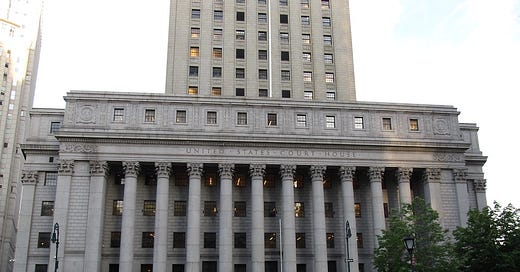NY Landlords lose big in court but it’s what they wanted
Explained: Why the landlord challenge to 2019's Housing Stability and Protection Act gets rejected in court for a second time.
Last Monday evening, a second circuit judge, the Honorable Barrington D. Parker, denied the landlord appeal that NY’s 2019 housing laws are unconstitutional. This was NY owners’ second attempt at using the courts to bring change. Why is this significant?
This is important because of how many properties, tenants and investors stand to be affected by whether 2019’s Housing Stability and Tenant Protection Act remains in place or is repealed. The HSTPA created some stronger tenant protections for buildings across NY State and in doing so it largely removed the ability for owners to raise rents beyond the annual increases allowed by the Rent Guidelines Board (RGB). Property values declined in some areas by as much as 20-45%, according to Wall Street Journal and my experience speaking to owners.
Landlords swiftly filed suit against these laws months after they were passed. The core premise was that the laws restricted property rights and severely reduced owners’ abilities to leverage / use their private property. To plaintiffs, this amounted to the taking of property, which violated the 5th amendment of the U.S Constitution. The initial case was dismissed when the judge disagreed that any taking had occurred. This led owners to appeal the decisions with a higher court. Their updated briefing for the appeal can be found here. It’s largely calling attention to the same issue.
Why did landlords lose a second time?
Parker said the taking claim didn’t hold up. His reasoning took a very tenant-friendly view. His exact words were:
“It is well settled that limitations on the termination of a tenancy do not effect a taking so long as there is a possible route to an eviction,” page 21 of Judge Parker’s opinion.
In other words, if there is still a path, no matter how muddy, long, or arduous– if there exists a way to remove tenants and regain possession of a property, the landlord is still in control, and nothing has been taken from him or her. Restricting when eviction can be used by the owner does not serve to erode an owner’s right to exclude, according to Parker. Parker cited Supreme Court precedent law that corroborated his view.
“This Court has consistently affirmed that States have broad power to regulate housing conditions in general and the landlord-tenant relationship in particular without paying compensation for all economic injuries that such regulation entails,” page 22 of the opinion.
In other words, Parker is saying that the landlord needs to roll with the punches and accept legislation when it is passed. The judge continued, to say:
"These varying changes mean that, on occasion, a savvy investor might receive a windfall because subsequent regulations reduced restrictions on rent-stabilized units. Other investors might suffer losses because regulations become tighter. Still others would receive returns that existed when they purchased their properties, because regulations remained essentially unchanged. All of this means that, for decades New York landlords have taken a calculated risk when they voluntarily entered the state’s regulated rental market. In such circumstances, the fact that this risk then results in a loss does not constitute a taking."Page 18 of the opinion.
Parker is saying that as an investor it’s your responsibility to make informed decisions and deal with all risks that emerge, and that you should have known that there was always a possibility of government regulatory risk. It sounds an awful lot like he’s saying that being an investor or property owner is a gamble at best.
The judge also took it upon himself to remind stakeholders of the court’s role in settling disputes:
“The legislature has determined that the [rent law] is necessary to prevent “serious threats to the public health, safety and general welfare,” the ruling states. “No one can seriously contend that these are not important public interests and courts are not in the business of second-guessing legislative determinations,” page 20 of the opinion.
“The caselaw is exceptionally clear that legislatures enjoy broad authority to regulate land-use, without running afoul of the Fifth Amendment’s bar on physical takings,” page 24 of the opinion.
It’s not the court room’s job to decide whether a city or government made the right call on how to govern itself.
Is this really a loss?
Owners’ defeat at the hands of NY state courts is something both landlords and tenants rejoiced in, funny enough. Owners see the case dismissal as an invitation to present their view to the Supreme Court and notch a victory in the nation’s highest court. A win at the Supreme Court by owners would mean a roll-back of many of the 2019 rent regulations and would likely mean a surge in property values for multifamily in New York. Tenant advocates see it as a victory for their goals as well. It’s interesting to hear two interpretations of the same facts read so differently. Judge Parker believes that there is “a long line of consistent authority” from the US Supreme Court, which has repeatedly upheld rent stabilization and rent control measures against similar claims over the past century. Meanwhile, a landlord spokesman for the owner group that lost, said the following: “Multiple decisions of the U.S. Supreme Court undermine those prior Second Circuit rulings and clearly signal that laws like this place an unconstitutional burden on property owners […] We always expected these issues to be decided by the Supreme Court and look forward to moving the case forward.”
It will be interesting to see who the Supreme Court agrees with. Before that though, the challenge for CHIP / RSA and owners in NY is for their case to be accepted for review by the Supreme Court.
Sources: Courthouse News, Bloomberg Law


